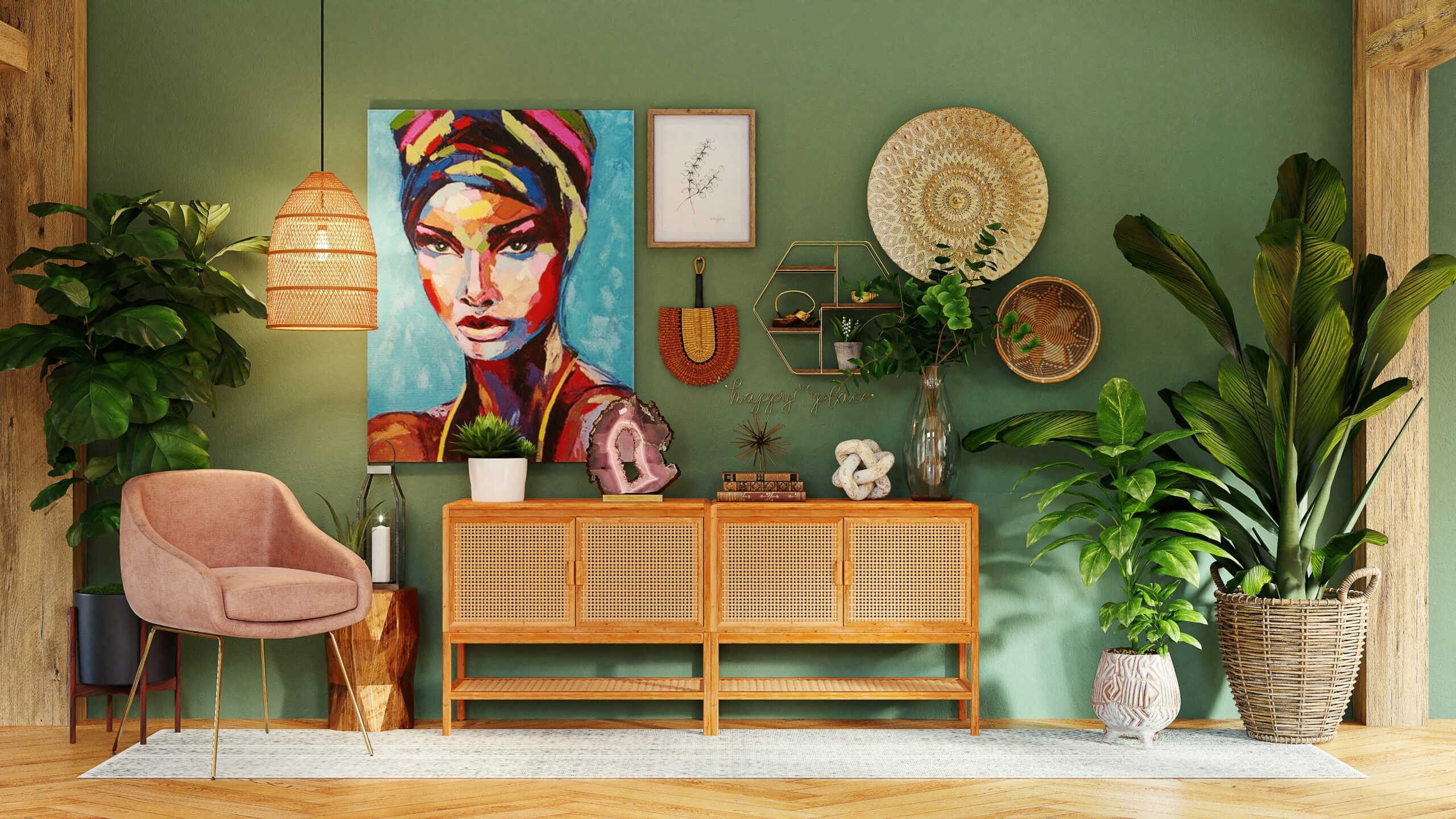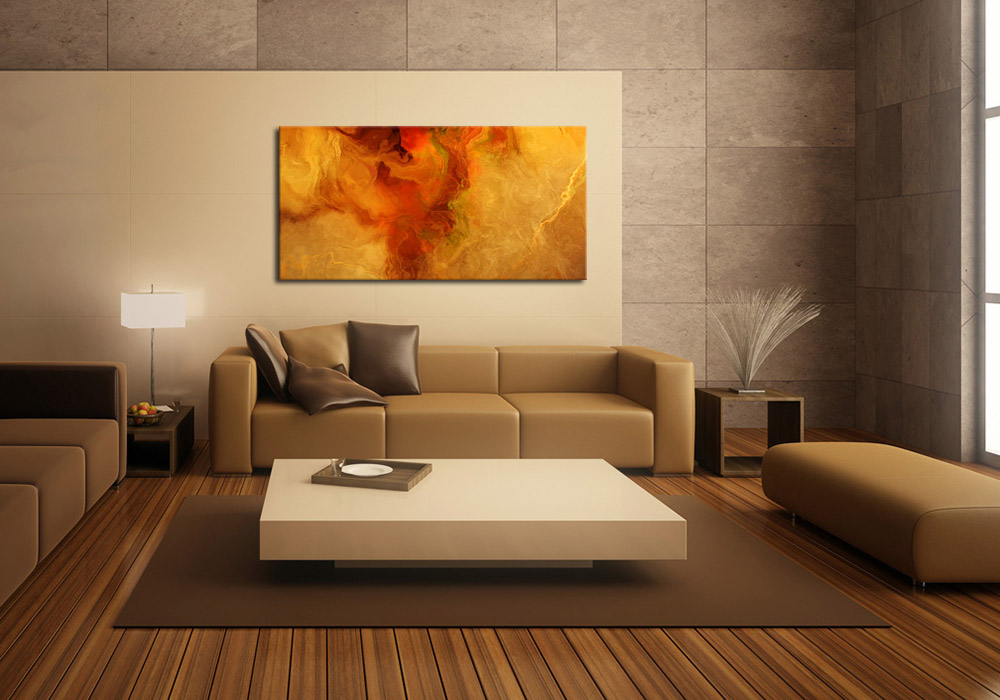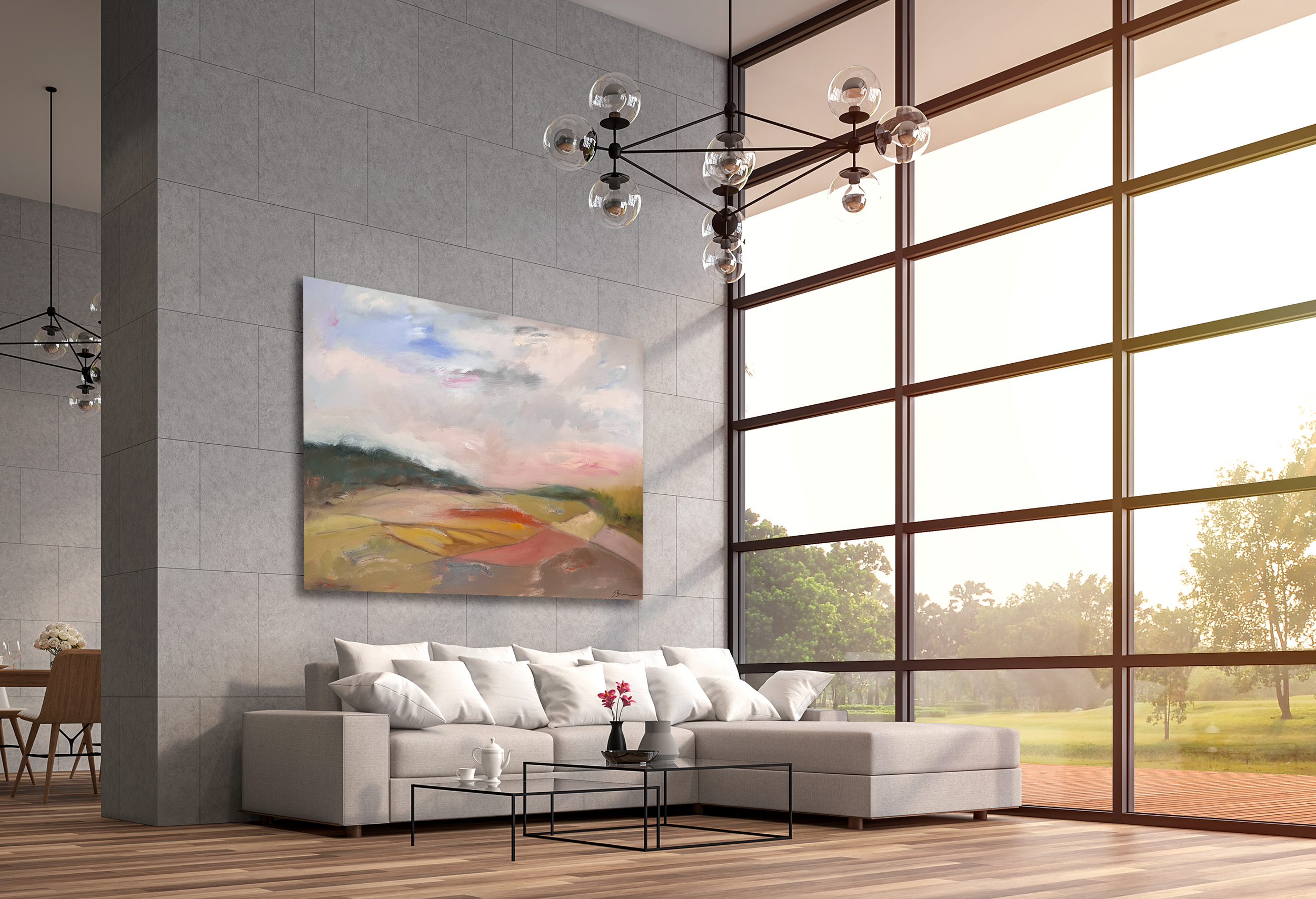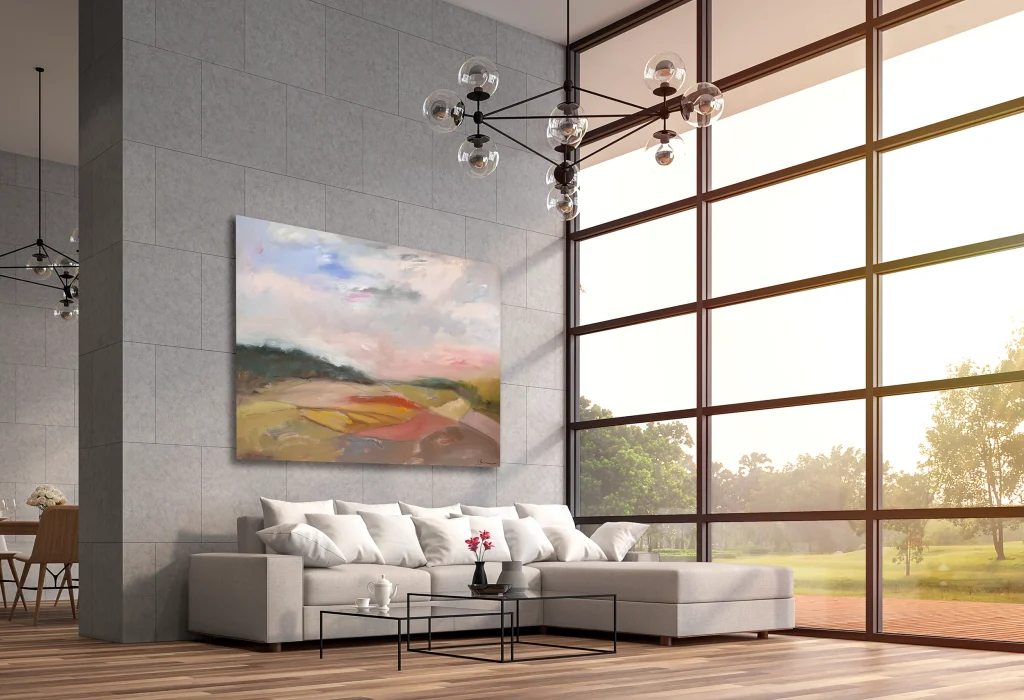Art of any size can move you, but oversized works have a rare ability to shift the entire mood of a room. A single large canvas or photograph can make a space feel intentional, elevate everyday routines, and turn blank walls into moments that reflect who you are. Beyond aesthetics, big art also solves real design problems—proportion, focus, and color balance—faster than most furniture swaps or renovations. If you’ve ever looked at a finished room that still felt incomplete, the missing ingredient was likely scale. Below are four compelling reasons to welcome large-scale art into your home, plus practical tips to get the effect right the first time.
1. Reflect your personality

Your home should read like a lived-in biography, not a showroom. Large-scale art helps you say something clear about your taste, values, and story—whether that’s a lyrical abstract that echoes your love of color, a serene landscape that mirrors your connection to nature, or a striking black-and-white that nods to your minimalist side. Because the scale is bold, the message is unmistakable: this is your point of view, confidently expressed.
Think of big art as your space’s thesis statement. It introduces the “why” of your decor in a single gesture and lets smaller elements—throws, lamps, books—act as supporting details. You don’t need multiple accents competing for attention; one strong piece can quietly orchestrate the room and reduce visual noise.
- Tip: If you’re unsure of your style, save 10–15 images you love and note the common threads (palette, subject, texture). Buy for those patterns—not trends.
- Hanging guide: Center height near eye level for most viewers (about 145 cm/57 in from the floor to the artwork’s visual center), then adjust for furniture height or ceiling slope.
2. Create a true focal point

Great rooms have hierarchy. An oversized piece instantly establishes one, guiding the eye the moment you walk in. A commanding canvas above a sofa, a dramatic photograph in a hallway, or a sculptural diptych over a dining credenza becomes the anchor that furniture and lighting can rally around. This centralized focus doubles as a conversation starter and makes layouts easier—once the focal point is set, seating, lamps, and side tables have a clear role.
If you’re exploring options sized to your exact wall, browse curated, ready-to-hang selections at tryartwork.com/—choosing by scale and palette keeps the composition cohesive from the start and saves you from mismatched frames or undersized prints. When in doubt, go larger; most rooms can handle more scale than you think, and a too-small piece is the quickest way to make a finished space feel unfinished.
- Sizing math: Aim for artwork width at roughly 1/2 to 2/3 of the furniture width beneath (e.g., a 210 cm sofa pairs well with a 105–140 cm wide piece).
- For tall ceilings: Use vertical formats or stacked diptychs to pull the eye up and “use” the full height; for long rooms, try panoramic works to visually widen the space.
- Lighting: Add a picture light or grazing wall washer at low output to reveal texture without glare; dimmers are your friend.
3. Add depth and visual space

Large works can alter perception. Landscapes that recede, abstracts with airy negative space, or photography with strong perspective lines draw the gaze “through” the wall, making compact rooms feel more open. In narrow spaces, a tall, slender piece acts like a vertical window; in wide, low rooms, a panoramic format stretches the sightline and balances proportions. Even in windowless areas, big art creates a psychological view, reducing the sense of enclosure.
Depth isn’t only about imagery; surface matters. Thick impasto or textured mixed media casts tiny shadows that read as dimensionality in daylight, while smooth gloss photography offers a polished “mirror” of light that can energize modern schemes. Choose the surface that suits the mood you want—soft and matte for calm, sleek and reflective for vibrancy.
- Frame choices: Thin black, raw oak, or gallery-white frames keep focus on the image. Float mounts add air around canvases and enhance the sense of depth.
- Placement trick: Leave generous negative space around the piece—at least 15–25 cm (6–10 in) from casings or adjacent art—so the eye reads the artwork as a “window,” not clutter.
- Small rooms: One big piece is often better than a busy gallery wall, which can visually shrink the space.
4. Play with color (and calm)
Color sets the emotional temperature of a room. A large artwork can introduce a serene, low-saturation palette that calms, or a punchy spectrum that energizes—without repainting a single wall. Use it as your roadmap: pull two or three hues from the piece into pillows, throws, a rug, or even a single accent chair for harmony. In neutrals-led spaces, a generous canvas prevents flatness by adding a focal dose of color and value contrast.
Curating color doesn’t mean going loud. Subtle gradients, moody monochromes, or restrained complementary schemes can be just as powerful at scale. The key is repetition: echo one color from the artwork in two or three smaller elements so the palette feels deliberate rather than accidental.
- Palette plan: Choose a dominant color (60%), a secondary color (30%), and an accent (10%) drawn from the artwork—then distribute them across textiles and accessories.
- Finish matters: Matte papers and canvas reduce glare in bright rooms; acrylic face-mounts intensify color in low-light or modern spaces.
- Seasonal refresh: Swap pillow covers or a throw to shift the room’s tone while keeping the artwork constant.
Large-scale art does design work that smaller pieces can’t—declaring a focal point, shaping color, lending depth, and telling your story in one confident gesture. Choose what resonates, size it to your architecture, light it softly, and let the rest of the room take its cues from there. When scale and intention align, your space looks curated—and lives beautifully—every day.
Did this article help you? Browse our blog for more interesting topics.







